TechRadar Verdict
Vivo loves to push advanced features out there before the competition. The Vivo X51 5G is a vehicle for its ‘gimbal’ camera, which offers superb low-light performance and super-stable video. It’s a great advancement, but the price may seem a little high for a phone with a mid-tier CPU, even if it is a great one.
Pros
- +
Superb low-light photos
- +
Action camera-style video stabilization
- +
Attractive design
Cons
- -
Pricey for a Snapdragon 765G
- -
Camera focus and color handling need work
- -
Mono speaker
Why you can trust TechRadar
Two-minute review
The Vivo X51 5G tests an idea we’ve talked about for a while now. We have said phones with a mid-range Snapdragon 765G processor feel almost as fast as those with a top-end chipset.
Vivo has run with this and made a fairly pricey Snapdragon 765G phone, pouring the money saved into the camera. As such, if you buy the Vivo X51 5G you should do so for its camera. It's what makes the phone stand out.
This phone has four rear cameras and, a true rarity in its class, none of them are 100% filler. There’s a 5x periscope zoom, a 2x zoom for portraits, a solid ultra-wide, and a great primary camera.
The Vivo X51 5G’s camera array does at times feel like an ambitious work-in-progress, as there are some focusing issues to iron out. But work through them and you’ll find some gold.
This phone is superb in low light. And while its day lit image quality is not as good as the Google Pixel 5’s, the wealth of zoom options mean you have more composition options at your fingertips at any moment.
The ultra-stable camera is also a win for video. You need to use the Super Anti-shake mode for gimbal-like results, and this is restricted to 1080p, but this mode is far better than the Samsung Galaxy S20’s alternative.
And the rest of the phone? It’s fine. The 90Hz screen looks great. You can’t go wrong with a Samsung AMOLED panel.
Sign up for breaking news, reviews, opinion, top tech deals, and more.
Battery life is passable, although we’d trade the phone’s 8mm thinness for better stamina. And the design is much like that of any top flagship: lots of curved glass, plenty of metal.
The Vivo X51 5G makes us wonder what other phone makers could, or will, do with ultra-stabilized camera tech. But Vivo has already made a good job of it.
You'll need to surmount one important hump though: that the Vivo X51 5G costs more than the Google Pixel 5 and has next-to-zero of the brand cachet in most countries. But don’t ignore the areas in which the Vivo has superior, or at least more expensive, tech.
Vivo X51 5G release date and price
- Costs £749 (roughly $980 / AU$1,380)
- Not available in the US or Australia
The Vivo X51 5G was announced in October 2020. It’s the follow-up to the mid-2020 Vivo X50 5G, which introduced Vivo’s stand-out camera gimbal feature.
It costs £749 (roughly $980 / AU$1,380), which may seem an awful lot for a Vivo phone, and one with a mid-tier processor, but there's a lot to like here, as you'll see below.
At the time of writing the Vivo X51 5G isn't available in the US or Australia.
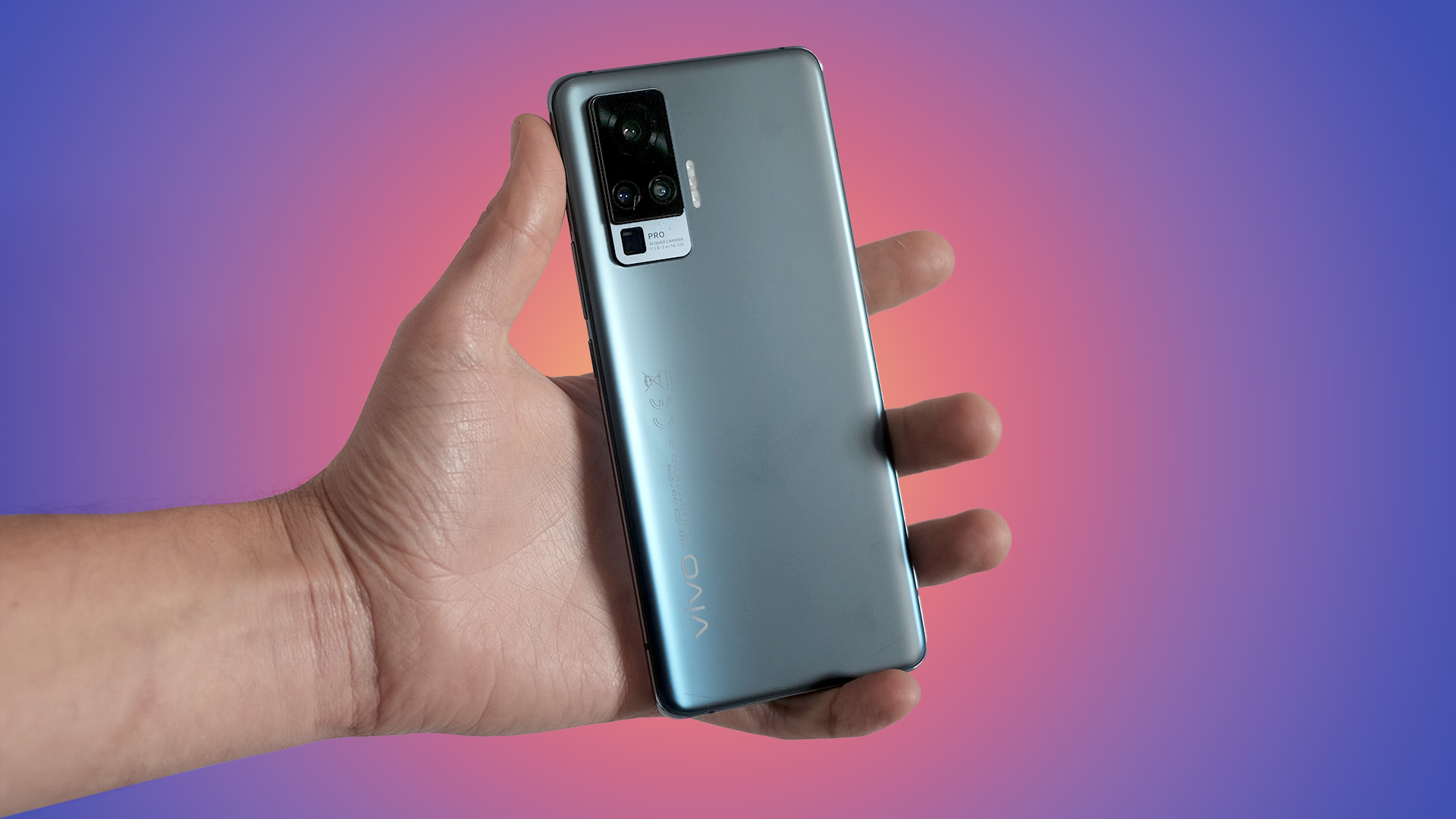
Design
- Stylish, curvy glass and metal build
- No headphone port or water resistance rating
The Vivo X51 5G looks pretty similar to most Android phones around $1000/£1000. That’s a good result when the phone costs less than a grand.
It has a curved glass front, a curved glass back, and aluminum sides. Vivo has styled out the X51 5G camera housing very well too. Despite the gimbal hardware and periscope zoom, the camera does not stick out like a piece of brutalist architecture. This is because the zoom sits on a separate part, one that presumably retreats further into the body.
Making a phone just 8mm thick with all the camera stuff inside is fairly impressive. And the Vivo X51 5G is not imposingly large. At 158.46 x 72.8mm it’s similar in size to a Galaxy S20, not an XL ‘plus’ or ‘ultra’ phone.
It’s easy to use. You don’t need giant hands. And a case comes in the box. A screen protector is applied in the factory too.
Vivo uses Schott glass rather than the more popular Gorilla Glass 6. However, there’s no obvious downgrade here. Its back has a lovely matte finish, one that doesn’t make greasy finger marks too apparent.
The Vivo X51 5G also has a fast in-screen fingerprint scanner. For the first few days it seemed a little pickier than some, but it settled in shortly after to become just as quick as some of the best around.
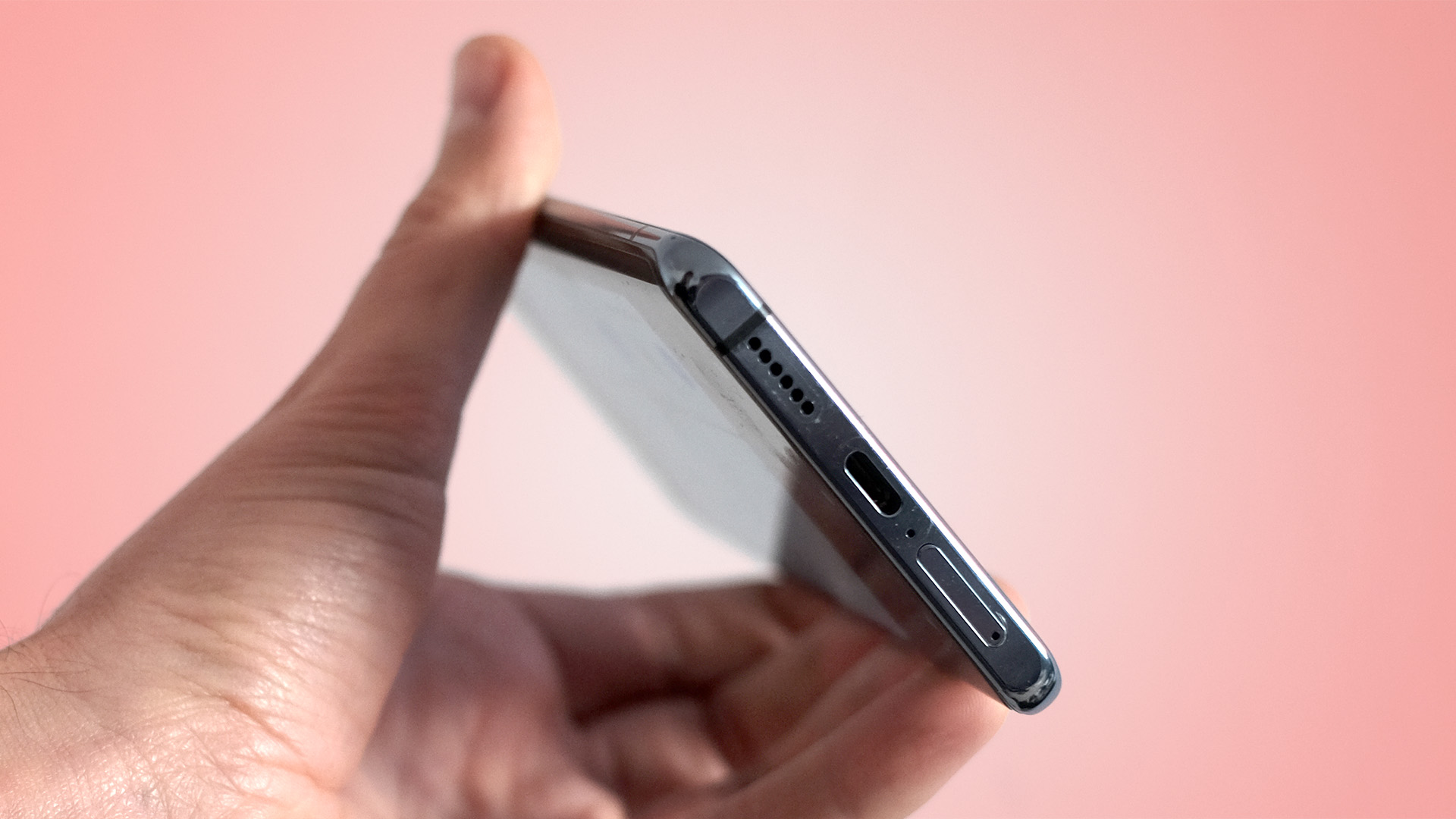
Its speaker is not quite a top performer, though. There’s only one driver, which sits on the bottom, and it doesn’t have the bass or richer mids of the Oppo Find X2 or Samsung Galaxy Note 20 Ultra. Even the much cheaper Poco X3 NFC has a better array. Don’t get us wrong, the Vivo X51 5G's speaker is still fine, but this area is clearly not a focus.
The phone does not have a 3.5mm jack either, but it does have a high-quality DAC for USB earphones, the AK4377A chip. Some Bluetooth receivers from Shanling and FiiO, which may be known to budget-conscious audiophiles, use the same chipset.
We still wish the Vivo X51 5G had a headphone port though, particularly as it has no official water resistance. Leaving out ports makes an IP rating easier to achieve. But headphone sockets in pricey phones are aberrations, not the norm.
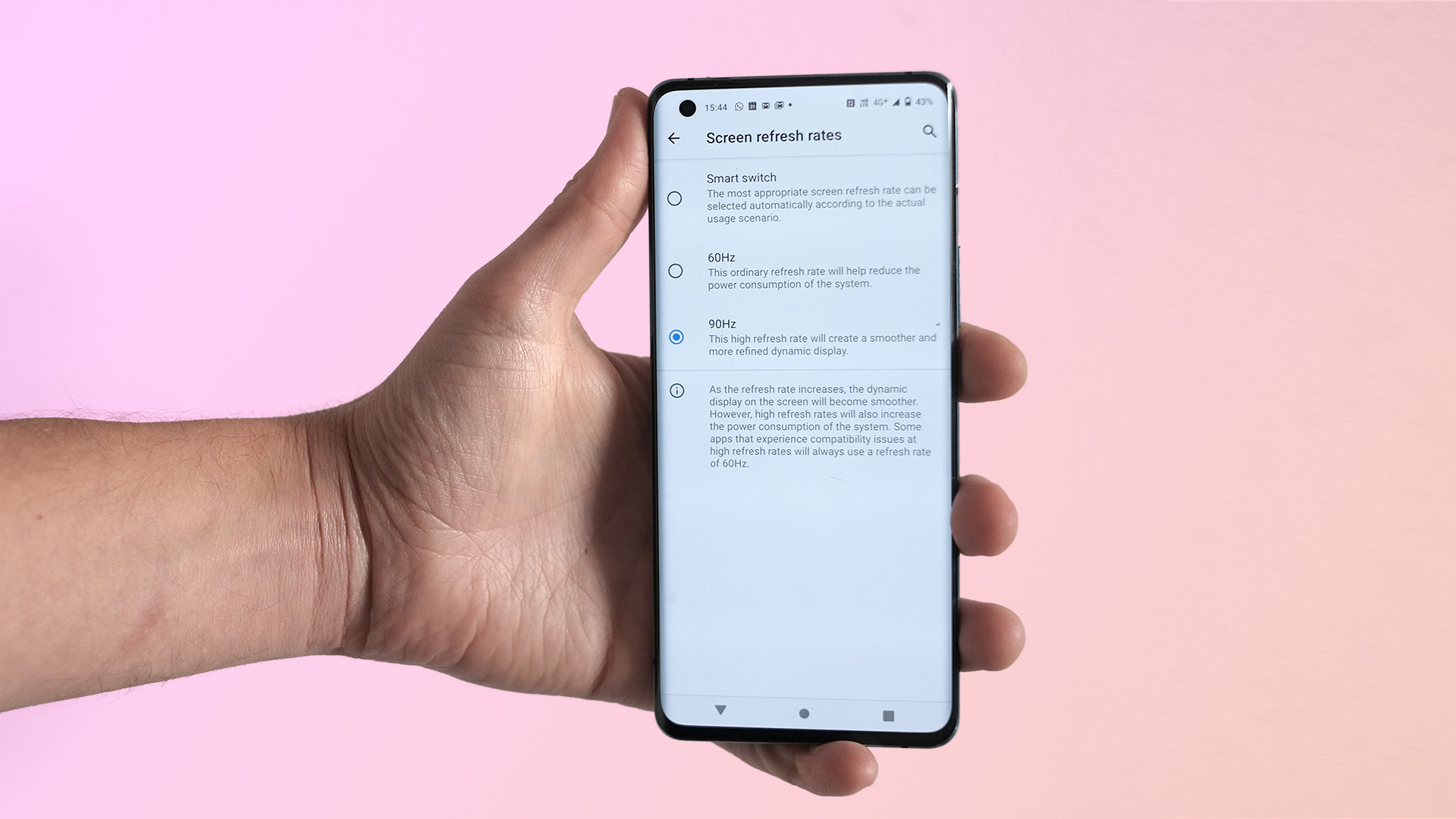
Display
- 6.56-inch 1080 x 2376 AMOLED screen
- A refresh rate of up to 90Hz
- The screen looks good and can be calibrated to your tastes
The Vivo X51 5G has a 6.56-inch AMOLED screen. It’s a Full HD+ display of 1080 x 2376 pixels, not an ultra-high res one, but it looks great and has a refresh rate of up to 90Hz.
This is a Samsung panel. There are no issues with an excessive blue cast when viewed from an angle, or of dodgy color.
Vivo doesn’t go down the nerdy route of letting you choose industry standard color gamut profiles like sRGB, DCI P3 and Adobe RGB. But there are a couple of more vivid modes and a ‘normal’ one (which, oddly, isn’t the default). The Vivo X51 5G offers a color temperature slider too.

Color calibration is not quite Samsung or Apple-grade, but this is a nice-looking screen. It has the perfect contrast of OLED and the color punch of a flagship.
You can manually switch between 90Hz and 60Hz refresh rates or use the Auto mode, which does the job for you. At 90Hz you’ll see smoother-scrolling menus and Twitter feeds, although you may want to consider dropping to 60Hz on busy days when you won’t get to see the charger until the late evening.
We’ve seen high refresh rate phones with a more pronounced effect on battery life, but the Vivo X51 5G doesn’t get away without any impact on it.
The display also supports HDR.
Camera
- Excellent 48MP main camera with a built-in gimbal
- Zoom and ultra-wide snappers also perform well
- 32MP selfie camera is good too
Here’s where the Vivo X51 5G gets interesting. The phone has four cameras including one of the most dynamic primary cameras of 2020.
Let’s start with that one.
This is a 48MP Sony IMX689 camera with a built-in ‘gimbal’. You can think of this as a turbo-charged alternative to OIS, optical image stabilization.
Both compensate for the natural movement of your hands as you take a photo, but this one tilts the camera lens to such an extent you can watch it bobbing back and forth like a little reptilian eyeball.
The Vivo X51 5G’s gimbal is useful in two ways. One is obvious. It improves the stabilization of video.
Use the standard mode and the camera compensates for significantly more lateral movement than the EIS (electronic image stabilization) of top-end phones. That’s the primary form of stabilization for video. It involves cropping into the field of view so there’s a buffer of image data that can be used to smooth out jolts and bumps from one frame to the next.
On first trying it during a run we were not hugely impressed. There’s still a heck of a lot of jolts and visible movement. We’re not at GoPro Hero 9 Black (or Hero 8 Black) level, and even walking does not have real ‘gimbal’ fluidity (although it’s not too far off).
However, switch on the Vivo X51 5G’s Super Anti-shake and things improve further. This mode really does get you quite incredible smoothness.
Samsung was one of the first companies to add a ‘hyper’ smooth mode to its phones. However, it did this, and continues to do so in the Note 20 Ultra, by using the ultra-wide camera. This leaves a whole stack of image data to use for electronic stabilization, but means the phone uses a lesser sensor.
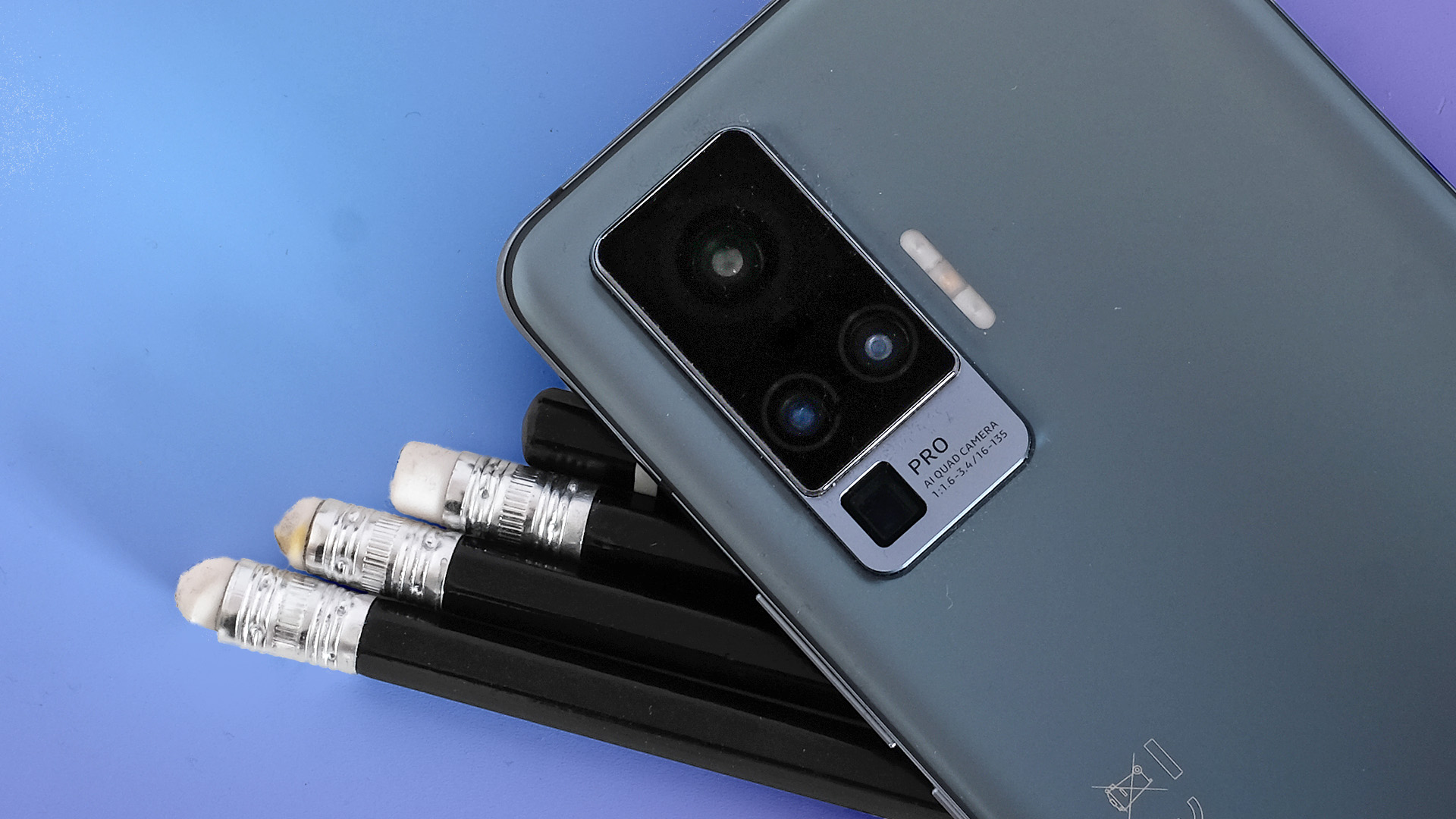
The Vivo X51 5G does not. It carries on using the main 48MP camera. Where the Note 20 Ultra’s image quality nosedives when you use the ultra-stable mode, the X51 5G just enforces a tighter crop. And it offers radically better image quality than the Note 20 Ultra in low light (again, shooting ultra-stable video).
You can run holding the phone using this mode and it’ll look pretty smooth, like a decent action camera. Resolution is the drawback. You can only shoot 1080p video with extra stability, not 4K.
To put this into a wider context, you might use the standard stable video mode if cycling on a road bike, but switch to Super Anti-shake on a mountain bike.
The Vivo X51 5G’s gimbal is also hugely beneficial for stills shooting in low light. Any phone worth paying over $300/£300 for these days has a computational photography night mode that merges multiple fast exposures. Each takes care of a certain level of brightness or darkness in the scene. It’s a patchwork.
This Vivo can take a slightly different approach because the gimbal lets it use multiple longer exposures. It’s low-light photography influenced by the old ways, where you’d lower the shutter speed to take a great night image.
The results are fantastic. Vivo’s X51 5G sails past the OnePlus 8T, and can even produce a cleaner image than either the Samsung Galaxy Note 20 Ultra or Oppo Find X2 Pro in a lot of situations.
In one test we took a picture of a cuddly toy in very low light, because its fur is a bit of a nightmare for a camera’s low-light noise reduction algorithms. The Vivo X51 5G performed far better than the Oppo Find X2 Pro, and while the Note 20 Ultra appeared to render more fur detail, it looks much more processed, more stressed, than the Vivo shot.
After blacking out the living room and shooting a bookshelf with all three phones, the Vivo X51 5G once again came away with the least compromised-looking image.
This is a superb phone for low-light photography. Your average shot will take 2-5 seconds to capture, but once it went all the way to 17 seconds. And the result, taken handheld, was still pin-sharp.

The Vivo X51 5G's night mode is also worth playing with in mid-level lighting where there’s a pronounced light contrast within the scene. It can be used to lift detail out of the shadows, without ending up with an unnatural-looking image. The Vivo often spits out exactly the kind of photo we might attempt to make playing with a RAW file in Photoshop.
This low-light performance only becomes more impressive when you compare the three phones’ daylit photos and realize the Vivo X51 5G clearly doesn’t have a sensor as good as the Oppo or Samsung ones. Fine details look less distinct, and little patches of color noise down at pixel level show the standard hardware (and perhaps processing) is not as good as, say, the Pixel 5’s.
It’s closer to something like the OnePlus 8T, a solid mid-range performer. The Vivo X51 5G also tends to oversaturate color, and its dynamic range optimization, while powerful, can look inconsistent shot-to-shot. Images can often do with a tone tweak to remove slight color casts.
The Vivo X51 5G’s other cameras are an 8MP 5x zoom, a 13MP 2x zoom intended for portraits, and an 8MP ultra-wide.
Those who have read about high-end cameras will note the ultra-wide and 5x zoom are not terribly high-res. But the top-tier camera experience you normally only get at around $1000/£1000 and above is absolutely here.
Wherever you are, there are dozens of shot-framing opportunities at your fingertips, and none of the fields of view is a dud. The 2x camera captures more detail of a far-away bush than a crop of the main one. And the 5x is in a completely different league.
The 5x cam needs a fair amount of light to perform well, not helped by the f/3.4 lens, but it’s a lot of fun to play around with. However, try to capture a night mode image with this camera and you’ll only get a vague, soft photo. It uses the primary camera for this, as the 5x just doesn’t have the stability to do the ‘photo merging’ dance.
5x night images are not worth taking. 2x night images use the same 48MP sensor crop technique, but tend to look okay.
The Vivo X51 5G has a macro mode too, one that uses a cropped view of the ultra-wide camera, because it can focus up to 2.5cm from your subject. It’s miles better than the 2MP cameras seen in many mid-range phones, and superior to some 5MP ones. However, we’re still dealing with a cropped view of an 8MP sensor.
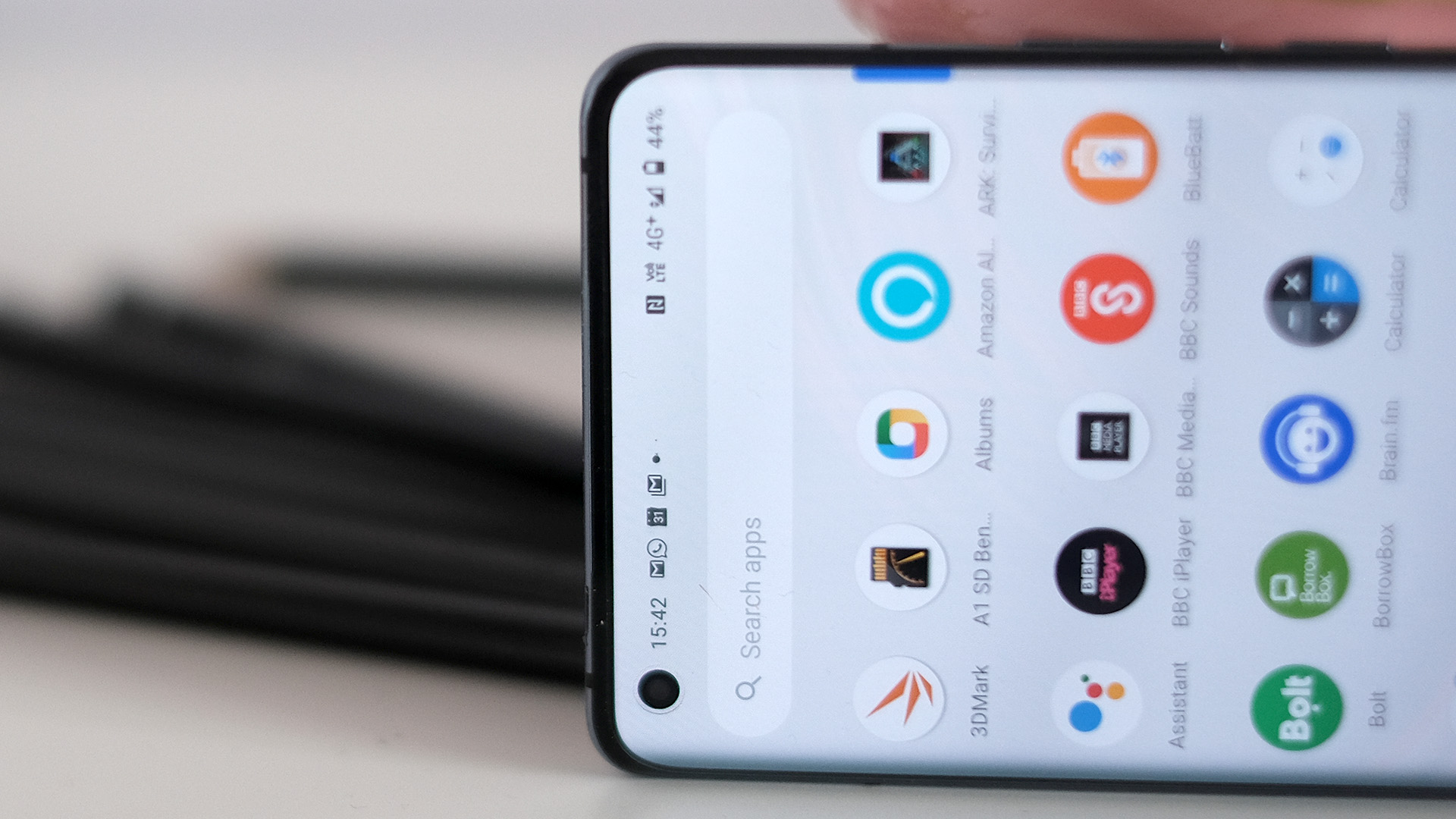
Focusing is the only significant technical issue we’re run into. When you switch camera views the Vivo X51 5G will often be out of focus, and will then not attempt to re-focus automatically. It’s a pain, but hopefully one that can be fixed with a software update.
The Vivo X51 5G’s selfie camera is very good. It’s a 32MP sensor with great detail in good and mid-level light. It can also use the multi-second night mode. This won’t turn a very dark image into a detailed one, but it does brighten them up.
Camera samples












Specs and performance
- Upper mid-range Snapdragon 765G chipset
- Real-world performance isn't far off a flagship
- Software is close to stock Android
The Vivo X51 5G has what might be the most important processor of the year. It’s the Snapdragon 765G, which was one of the first Qualcomm chipsets to bring 5G to cheaper phones.
This, well, it isn’t one of those cheaper phones. But you still get the benefits of the Snapdragon 765G’s best parts.
The Vivo X51 5G does not feel much slower than a Snapdragon 865 Plus phone, and it runs demanding games like Fortnite perfectly well. You won’t see frame rates above 30, as the 60fps mode isn’t enabled as it is on the latest iPhones. But it does stick at 30fps almost all the time.
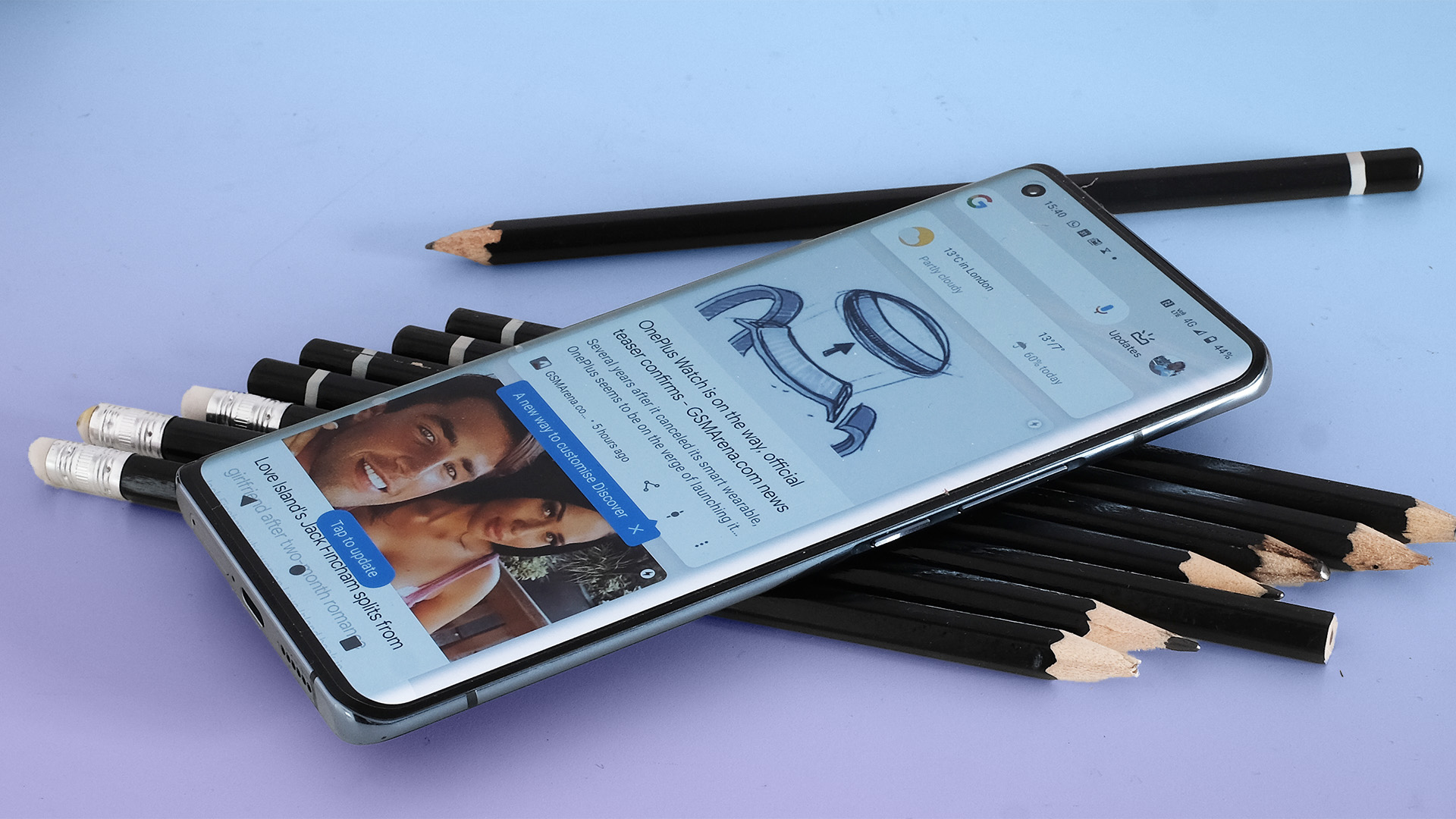
Fast app loads, the ability to play games and a consistent, smooth experience: there’s not a great deal to separate the Vivo X51 5G and a phone with a Snapdragon 865.
But the techy purists may prefer to get something like a OnePlus 8T, which is cheaper and has a legit top-end chipset. The difference in raw power between the two is significant as well.
The Vivo scores 1,880 in Geekbench 5, to the ~3,300 of a OnePlus 8T, or the 4,600-odd expected from the iPhone 12. Qualcomm’s 765G does a good impression of a top-tier processor, but it isn’t one.
We’ve just reached the point where, with fast enough RAM and storage, a less powerful processor doesn’t feel all that different when done right.

The other worry with a phone from a brand you’ve never owned before is the software. Vivo has a UI called Funtouch OS 10, seen in the X51 5G, but until you head into the settings menu and see the custom layout you could easily believe this was plain old Android.
This is closer to ‘vanilla’ than a Samsung, OnePlus, or Xiaomi phone. That is no bad thing. The phone currently runs Android 10, not the newer Android 11, but we’re not far enough from that version’s launch for that to seem an issue.
The Vivo X51 5G also has 8GB of RAM - which is about standard for the price, and 256GB of storage.
Battery life
- 4,315mAh battery with 33W charging
- Offers around a day of life
- No wireless charging
The Vivo X51 5G has a 4,315mAh battery, a completely standard capacity. It’s not worryingly small, not impressively large either.
There’s no ‘just right’ middle ground here, though. We love a big battery.
Real-world stamina matches the capacity. The Vivo X51 5G has no problem lasting a full day, particularly if you use the 60Hz display mode or do not spend hours scrolling through apps that welcome the 90Hz motion-smoothing feature.
The most we’ve had left by bedtime was 30%, but it’s usually less. Still, the Vivo X51 5G does seem to last longer than the OnePlus 8T used at its top 120Hz refresh rate.
If you’re a fan of bold Chinese brands like Vivo and want higher capacity, consider something like the Xiaomi Mi 10T. It has a 5,000mAh battery, allowing for significantly better life.
The Vivo X51 5G has fairly fast 33W charging. It takes the phone from flat to 65% in 30 minutes.
That beats the iPhone 12 and the top Samsungs, but OnePlus is ahead. The OnePlus 8T reaches 93% in the same time. And Vivo has already developed a 120W charging method, Super FlashCharge, which claims to refill a phone in 13 minutes. That’s one to look out for in 2021. Nice to have one thing to look forward to, eh?
Should I buy the Vivo X51 5G?
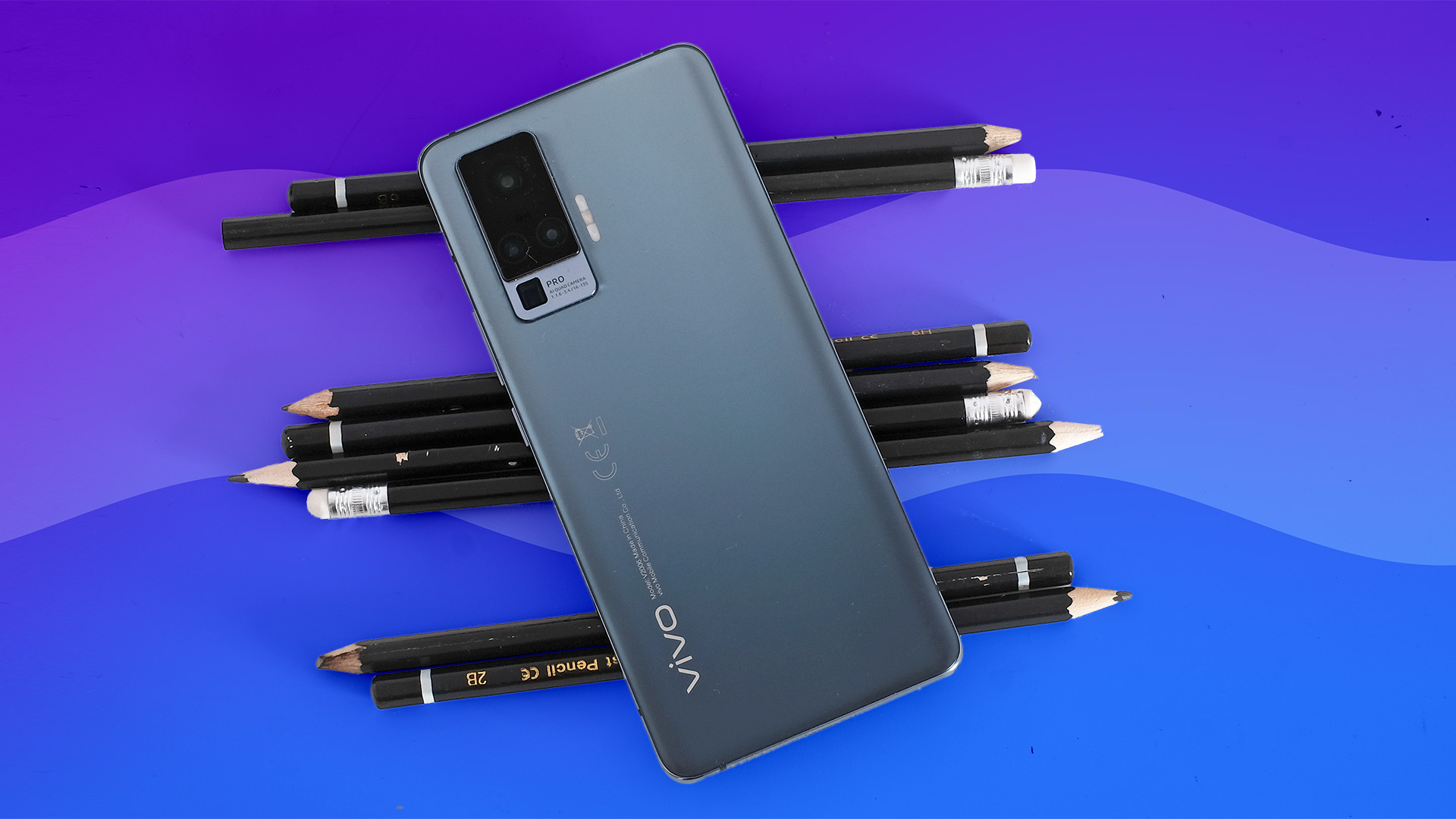
Buy it if...
You want a Galaxy Note 20 Ultra-style camera for less moolah
Our favorite part of using the Vivo X51 5G is having a camera array at our fingertips that feels like a photographer’s toolbox. Low light? No problem. Need a zoom? Sure, here’s a pair. Periscope zoom phones like this one are rare at under $1000. And while the X51 5G is far from cheap, features like that zoom are the very best excuse.
You want a phone that can work like an action camera
The Vivo X51 5G is one of the first phones with a camera ‘gimbal’. This tilts the camera to compensate for hand movement. Used with the Super Anti-shake mode you can get real GoPro-style motion smoothing for video.
You want superior low-light images
The gimbal is also incredibly useful for low-light images, often resulting in cleaner pictures than even some of the top performers like the Samsung Galaxy S20 and Oppo Find X2 Pro. It allows for a slightly different approach to low-light capture, one that employs some classic phone tactics, with a hint of those used by DSLR and compact system camera shooters.
Don't buy it if...
You’re the ultimate photo purist
For the Vivo X51 5G’s price you could get a Pixel 5 and have money left over. The Pixel doesn’t have a zoom camera or as glass-packed a design, but its everyday camera processing is much better than the Vivo’s. The X51 5G is an unusual case of a phone that really shines at night more than daytime.
You need two-day battery life
Like just about every 8mm-thick phone made to look as fancy as it can be, the Vivo X51 5G is not a battery life king. If you want truly great battery life, you’re better off with something cheaper like the Poco X3 NFC. Phones not focused on thinness almost always have bigger batteries, and we love them for it. The X51 5G lasts a day, and that’s it. And we’ve had to give it a top up a couple of times when using its 90Hz display mode.
You need top-tier power
The Vivo X51 might have a near-flagship price, but it doesn't have a flagship chipset. While that makes little difference most of the time, those who want a phone that can run every game on max settings will find more power for similar money elsewhere.
First reviewed: October 2020

Andrew is a freelance journalist and has been writing and editing for some of the UK's top tech and lifestyle publications including TrustedReviews, Stuff, T3, TechRadar, Lifehacker and others.
